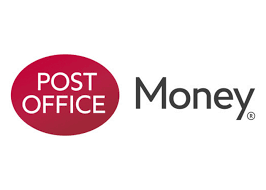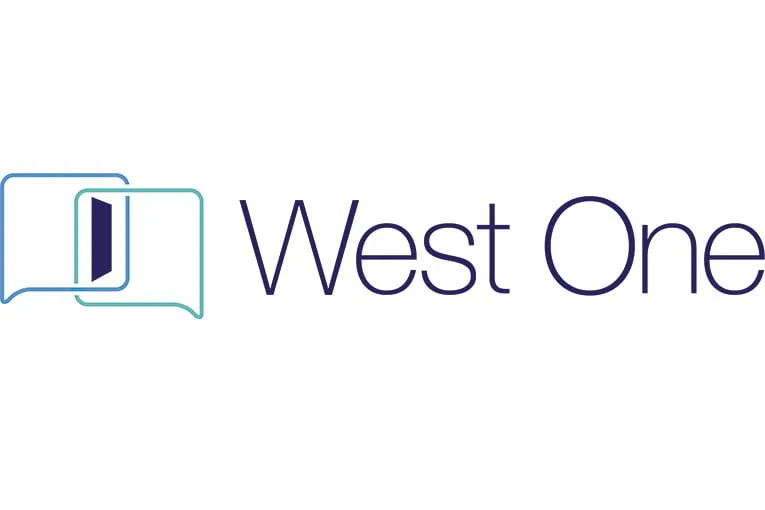Remortgage to Buy a Second Home
Remortgaging your current property to buy a second home is a smart way to unlock equity and expand your property portfolio or purchase a holiday home. A home mortgage can also be used strategically to finance additional property purchases, allowing you to leverage your existing assets for further investment opportunities.
Whether you’re a first-time buyer stepping into the second home market or a seasoned landlord growing your investment portfolio, this guide will walk you through the process, benefits, and lender options available. Seeking expert advice is crucial to ensure you make informed decisions and secure the best possible outcome when remortgaging to buy a second home.
What Does It Mean to Remortgage to Buy a Second Home?
Remortgaging involves switching your existing mortgage to a new deal, either with your current lender or finding a new lender. This process often means taking out a new loan that replaces or supplements your existing financing. A remortgage deal can offer different terms or rates compared to your current arrangement.
When you remortgage to buy a second home, you borrow more against your current property, using the released equity as a deposit or full payment for the new property. Depending on the intended use of the new property, you may need a new mortgage or a second home mortgage, as requirements differ for second homes versus buy-to-let properties.
Many homeowners remortgage to buy another property as a strategic way to expand their assets.
Reasons to Remortgage for a Second Property
Many individuals and investors choose to remortgage their existing home to buy property for various purposes, such as:
- A holiday home for personal use or holiday letting
- A buy-to-let property to generate rental income
- A home for a family member (e.g., children at university or elderly parents)
- A second residence for commuting or business use
- To convert an existing property into a rental and move into a new home (let-to-buy)
- To buy property abroad, using released equity to fund an international property purchase
- To purchase a commercial property for business operations or as an investment
- To fund a buy to let investment, expanding your property portfolio through remortgaging
Types of Second Properties
When remortgaging to buy another property, it’s important to understand the different types of second properties available and how they affect your mortgage options. The most common types include residential properties, holiday homes, buy-to-let investments, and commercial properties.
A residential mortgage is typically used if you plan to live in the new property yourself, while holiday homes are ideal for those seeking a personal retreat or a property to let out seasonally. If you’re interested in generating rental income, a buy to let mortgage is designed specifically for landlords and often comes with different criteria. A larger deposit and higher interest rates compared to standard residential mortgages. For those looking at business opportunities, commercial properties require specialist lending and may involve more complex approval processes.
Each type of property comes with its own set of rules, and mortgage lenders will assess your application based on the intended use. Working with a mortgage broker can help you navigate these differences, compare interest rates, and find the most suitable mortgage product for your needs when remortgaging to buy another property.
Key Considerations for New Buyers
If you’re new to remortgaging or second home ownership, consider the following: Your employment status, credit rating, and credit status will all impact your mortgage application.
Lenders will also consider outstanding payments, maintenance payments, tax credits, and child benefits as part of your overall financial assessment. Using a mortgage affordability calculator or mortgage calculator can help you estimate how much you can borrow and what your mortgage repayments might be. New buyers should consult a mortgage adviser for guidance through the application process.
Equity & Property Value
Your borrowing power depends on how much equity you’ve built, with the market value of your home being a key factor in determining this. For example, if your home is worth £300,000 and you owe £150,000 on your mortgage (this £150,000 is your existing mortgage balance or outstanding mortgage), you may be able to release some or all of the remaining £150,000, subject to affordability and loan-to-value limits.
The equity released will depend on the difference between your property’s market value and your outstanding mortgage. Lenders will also assess whether you have enough equity to qualify for the maximum loan needed for your second property.
Loan-to-Value (LTV)
Most lenders will allow you to remortgage up to 75–90% of your property’s value for a residential second home. Your loan-to-value ratio can impact the mortgage rate you are offered by lenders, with lower LTVs often resulting in more competitive rates. For buy-to-let or holiday let purchases, this may reduce to 70–80%.
Affordability
Lenders will assess your income, outgoings, and overall financial situation to ensure you can afford both the remortgaged loan and any new property repayments. Borrowing more may result in higher monthly repayments, which should be factored into your affordability assessment.
Deposit Requirements
You typically need at least a 15–25% deposit for a second property, which may come from your remortgaged equity.
Second Home Stamp Duty
Be aware of the 5% additional stamp duty surcharge applied to second properties in the UK.
For Experienced Landlords: Expanding Your Portfolio
If you already own one or more rental properties, remortgaging can be a cost-effective way to:
- Access capital for deposit funding or full purchase
- Increase rental yield by investing in higher-return properties
- Refinance existing properties to secure better interest rates
- Diversify your portfolio with holiday lets, HMOs, or semi-commercial units
Experienced landlords may have two mortgages or even a third mortgage when expanding their portfolio. In some cases, releasing enough equity can allow you to buy a new property with only one mortgage remaining on your original home.
A second mortgage or third mortgage can also be used as alternative financing options for portfolio growth.
Lenders often assess your rental income, portfolio size, and property type when offering terms.
Remortgage Use Cases
Using your existing home’s equity is a common strategy for funding a second home purchase, with releasing equity often providing the necessary funds.
| Scenario | Strategy |
|---|---|
| Holiday Home | Use equity to buy a countryside or seaside retreat; may require holiday let mortgage if rented out. |
| Buy-to-Let Property | Release equity to fund a new BTL deposit or, in some cases, to buy a property outright, meaning you can purchase the second property without needing a new mortgage by leveraging the equity in your current home. |
| Let-to-Buy | Let out your current home and remortgage to purchase a new residential home. |
| Helping Family | Gift or loan equity release funds to children or parents for their own purchase. |
Note: A secured loan (second charge mortgage) can also be used to release funds for a second property, offering an alternative to traditional remortgaging.
Alternatives to Remortgaging
Remortgaging isn’t the only way to finance a second property. Depending on your circumstances, you might consider using personal savings, taking out a personal loan, or requesting a further advance from your existing lender. A further advance allows you to borrow additional funds on top of your current mortgage, often at your lender’s standard rates.
Another option is a second charge mortgage, which is a separate loan secured against your property, leaving your existing mortgage in place. This can be a useful way to access more money without changing your main mortgage deal, but it’s important to compare interest rates and fees carefully.
Each alternative has its own advantages and drawbacks, so it’s wise to consult a mortgage advisor who can help you assess your options and choose the best solution for your second property purchase.
Step-by-Step Guide to Remortgaging for a Second Home
- Property Valuation
A current market valuation of your home helps determine how much equity is available. - Calculate Equity & Affordability
Understand how much you can borrow based on income, outgoings, and credit history. - Define Your Purpose
Is the second home for personal use, investment, or family? - Speak to a Mortgage Broker
An experienced broker can guide you to the right lenders and ensure you meet criteria. - Prepare Documentation
Include ID, proof of income, bank statements, property deeds, rental projections if applicable, and details of any outstanding payments. - Submit Your Remortgage Application
You will need to complete a remortgage application and provide all required documents to your mortgage lender. Apply early to lock in current rates, particularly useful in rising rate environments.
Remortgaging before the end of your current deal may result in an early repayment charge, which can be substantial depending on how early you remortgage. - Legal Completion
Once approved, solicitors complete the remortgage and funds are released to use toward your second purchase. Note that legal fees will be incurred during the completion process.
High Street Lenders for Second-Home Remortgage
| Lender | Max LTV | Rates From* | Accepts Second Homes | Key Features |
|---|---|---|---|---|
| Barclays | 90% | 4.10% | Yes | Competitive rates, large loans available |
| Halifax | 85% | 4.20% | Yes | Flexible repayment terms |
| HSBC | 90% | 4.25% | Yes | Low rates for high income borrowers |
| NatWest | 85% | 4.35% | Yes | Residential and let-to-buy options |
| Nationwide | 90% | 4.15% | Yes | Fixed and tracker deals available |
| Santander | 85% | 4.30% | Yes | Interest-only considered |
*Indicative rates only. Subject to change and applicant criteria.
Specialist Lenders for Buy-to-Let and Holiday Let
Specialist mortgage providers can offer tailored solutions for borrowers with unique financial circumstances, such as low income, self-employment, or poor credit history. The table below lists some of the leading specialist lenders and their key features:
| Lender | Max LTV | Type | Specialist Features |
|---|---|---|---|
| Shawbrook Bank | 75% | BTL & HMO | Flexible underwriting for landlords |
| Aldermore | 80% | BTL & Let-to-Buy | Ideal for portfolio landlords |
| Paragon Bank | 80% | BTL & Portfolio | Accepts complex portfolios and limited companies |
| LendInvest | 85% | BTL | Fast processing and modern platform |
| Foundation Home Loans | 80% | BTL | Accepts poor credit and rental projections |
| Mansfield BS | 75% | Holiday Let | Seasonal income considered |
Tax Implications
Buying a second property through remortgaging can have important tax consequences. You’ll need to factor in the additional stamp duty surcharge that applies to second properties, which can significantly increase your upfront costs. If you plan to rent out your new property, any rental income you earn will be subject to income tax, and you may also face capital gains tax if you sell the property at a profit in the future.
It’s essential to understand how these taxes will impact your overall investment and mortgage payments. Consulting a tax advisor or mortgage broker can help you navigate the tax landscape, ensure compliance, and make the most of any available tax reliefs or deductions when remortgaging to buy a second property.
Insurance and Protection
Protecting your investment is crucial when remortgaging to buy a second property. You’ll need appropriate building and contents insurance to safeguard your new asset, and it’s wise to consider life insurance or mortgage protection insurance to cover your mortgage payments in case of illness, accident, or death.
Income protection or critical illness cover can also provide peace of mind, ensuring you can keep up with mortgage payments if you’re unable to work. A mortgage broker or insurance advisor can help you find the right policies tailored to your needs, so you can focus on enjoying your second property without unnecessary financial worry.
Local Market Trends
Before remortgaging to buy a second property, it’s vital to research local market trends in your chosen area. Understanding the current property market, including price movements, rental yields, and demand for different property types, can help you make a more informed investment decision.
A mortgage broker or property expert can provide valuable insights into the local market, helping you assess whether your chosen location is likely to deliver strong returns or long-term value.
Consider factors such as transport links, schools, and amenities, as these can all influence the desirability and future value of your second property. Staying up-to-date with local trends ensures your investment remains sound and your new property continues to meet your financial goals.
Advantages of Remortgaging for a Second Home
- Unlock capital without selling your home
- Lower rates than traditional second home loans or personal loans
- Diversify assets and generate rental income
- Flexible borrowing can fund deposits or entire purchases
- Potential tax benefits for buy-to-let investments
Things to Watch Out For
- Second property stamp duty surcharge (5%)
- Affordability checks are stricter for multiple properties
- Void periods if buying to let or using holiday lets
- Interest-only mortgages may have tighter exit requirements
- Property value fluctuations can affect your equity later on
- Early repayment charges may apply if you remortgage before your current deal ends, increasing your overall costs
Ready to Remortgage and Buy a Second Home?
If you’re considering a remortgage to purchase a second property, it’s important to have the right guidance. Whether you’re just starting out or you’re looking to grow your portfolio, our expert mortgage advisers are here to help.
Before proceeding, make sure to review your credit rating and credit status, and seek expert advice to secure financing for your second home purchase.
We can:
- Review your equity and borrowing potential
- Compare remortgage deals across high street and specialist lenders
- Provide tailored solutions for residential, BTL, or holiday-let purchases
- Help you navigate affordability rules and second-home stamp duty
Call us today on 01332 470400 or complete the enquiry form and one of our advisers will be in touch for a free consultation
What our customers say
Marlon
25 Apr 2025
Showing our favourite reviews

Always attentive, helpful and efficient
Jonathan, 27 Jan 2025

Best Mortgage Broker in the UK!
Liam, 26 Nov 2024

Ben was really helpful in helping me…
George, 28 Aug 2024
FAQs
Can I remortgage my home to buy a second property?
Yes, many homeowners remortgage their primary residence to release equity and use the funds as a deposit or full payment for a second property. This is a common strategy used to purchase:
A holiday home
A buy-to-let investment
A property for a family member
It’s essential to meet the lender’s affordability checks, have sufficient equity, and consider the purpose of the second property when choosing the right mortgage type.
How much equity do I need to remortgage for a second home?
Most lenders allow you to borrow up to 75–90% loan-to-value (LTV) for a second residential property. That means you’ll typically need 10–25% equity available in your current home to be eligible.
For buy-to-let or holiday lets, lenders may cap LTV at 70–80%, and may require stronger income proof or rental projections.
Will I pay more stamp duty when buying a second property?
Yes. In the UK, second home purchases are subject to a 5% stamp duty surcharge on top of standard rates. This applies whether you’re buying:
A buy-to-let
A holiday home
A second residence
It’s important to factor this into your overall costs when using a remortgage to fund the purchase.
What’s the difference between a second home mortgage and a buy-to-let mortgage?
A second home mortgage is designed for personal use (e.g. a holiday retreat or weekday residence), while a buy-to-let mortgage is for properties you plan to rent out.
Key differences:
Buy-to-let mortgages often require larger deposits (25%+) and have higher interest rates
Lenders assess rental income instead of personal salary for affordability
Second home mortgages focus on your overall income and outgoings
Your mortgage choice should match the intended use of the property.
What are the risks of remortgaging to buy another property?
While remortgaging can unlock capital and create new income streams, key risks include:
Early repayment charges if leaving your current deal early
Higher monthly repayments if you increase borrowing
Property value fluctuations, which could reduce future equity
Void rental periods if buying to let
Tighter affordability checks due to multiple mortgage commitments
Always seek professional advice to ensure the strategy aligns with your long-term financial goals.
Ready to Take the First Step?
Whether you’re a first-time buyer, remortgaging, or moving home, bad credit doesn’t have to hold you back.
Understanding credit scoring can help you prepare for a mortgage application. You can speak to one of our specialist mortgage brokers who would be able to guide you through the process. They will advise if there is a lender available and the maximum loan amount based on your circumstances. We are a whole of market mortgage brokerage with access to all lenders.






























